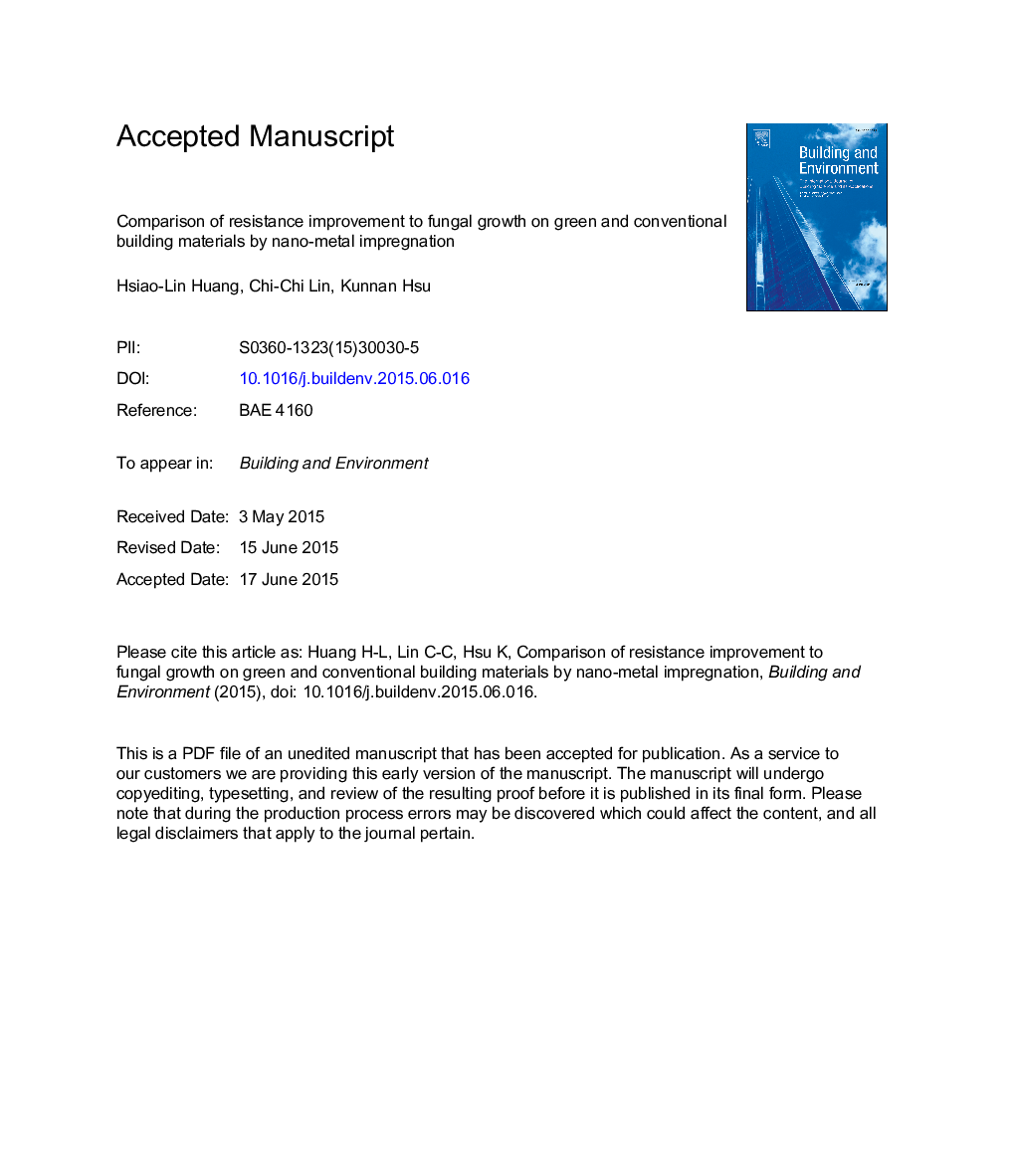| Article ID | Journal | Published Year | Pages | File Type |
|---|---|---|---|---|
| 10282803 | Building and Environment | 2015 | 36 Pages |
Abstract
The fungal growth without nano-metals on test materials did not show that green materials were more prone to fungal growth. After nano-metal treatment, the observed order of fungal growth resistance of nano-metals at their highest selected concentrations on test materials was nano-zinc = nano-copper > nano-silver for WF and GWF, nano-zinc > nano-silver = nano-copper for GB, nano-zinc > nano-silver > nano-copper for GGB, CSB and GCSB, nano-silver > nano-copper = nano-zinc for MFC, and nano-silver > nano-copper > nano-zinc for GMFC. Nano-zinc seems to be the most favorable nano-metal for wood and wood composite materials. Green materials were less resistant to fungi attack relative to their conventional counterparts treated by nano-metals, particularly GWF and WF. All test nano-metals failed to provide complete protection against fungal growth on the eight test BMs at the selected concentrations. However, the higher the nano-metal concentration was, the longer the lag period until growth began and fewer fungi grew on the materials.
Related Topics
Physical Sciences and Engineering
Energy
Renewable Energy, Sustainability and the Environment
Authors
Hsiao-Lin Huang, Chi-Chi Lin, Kunnan Hsu,
